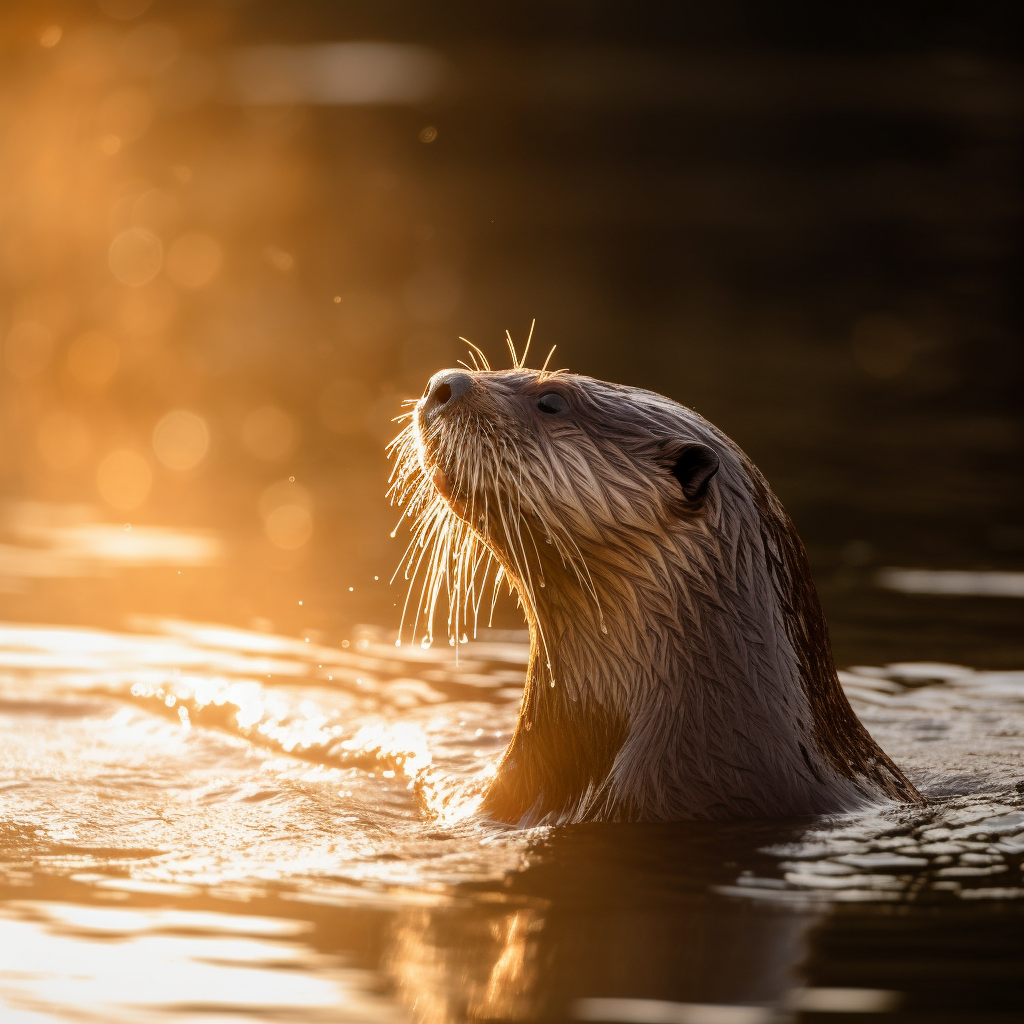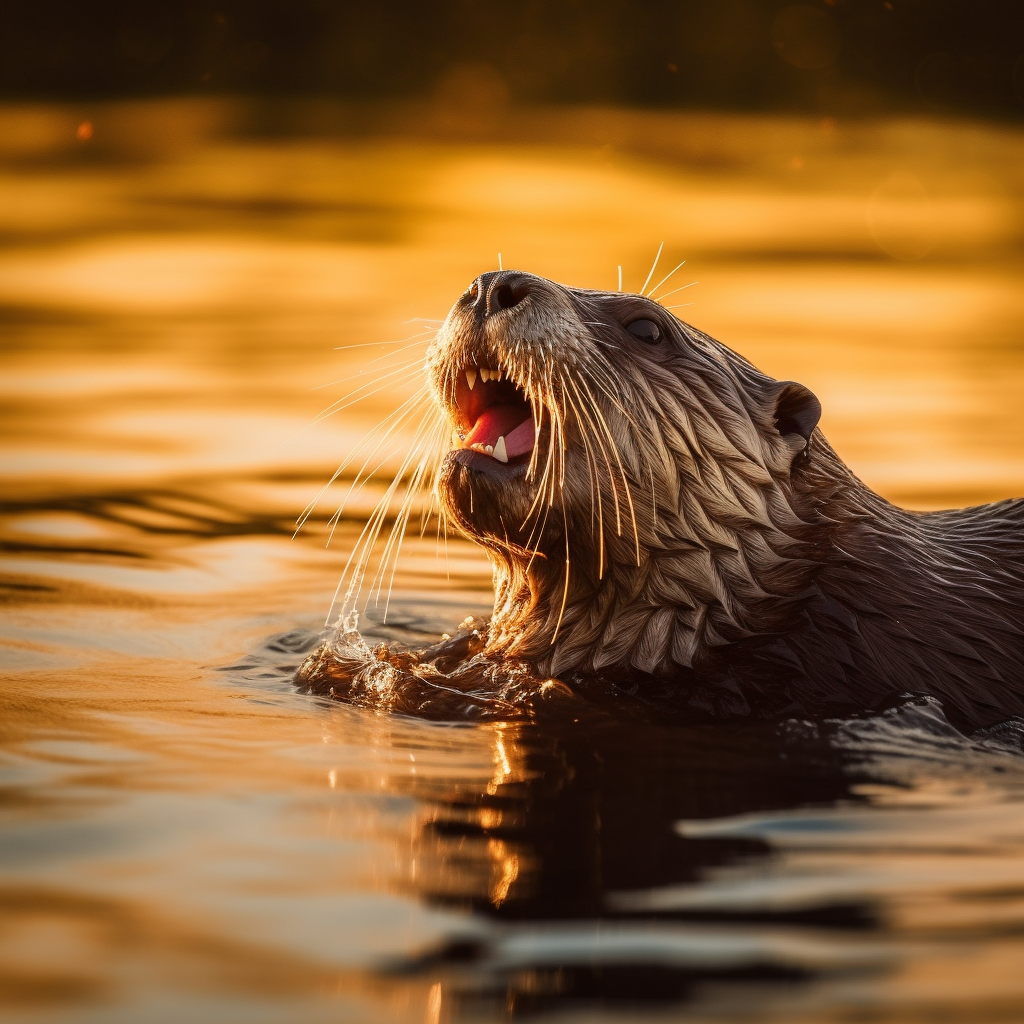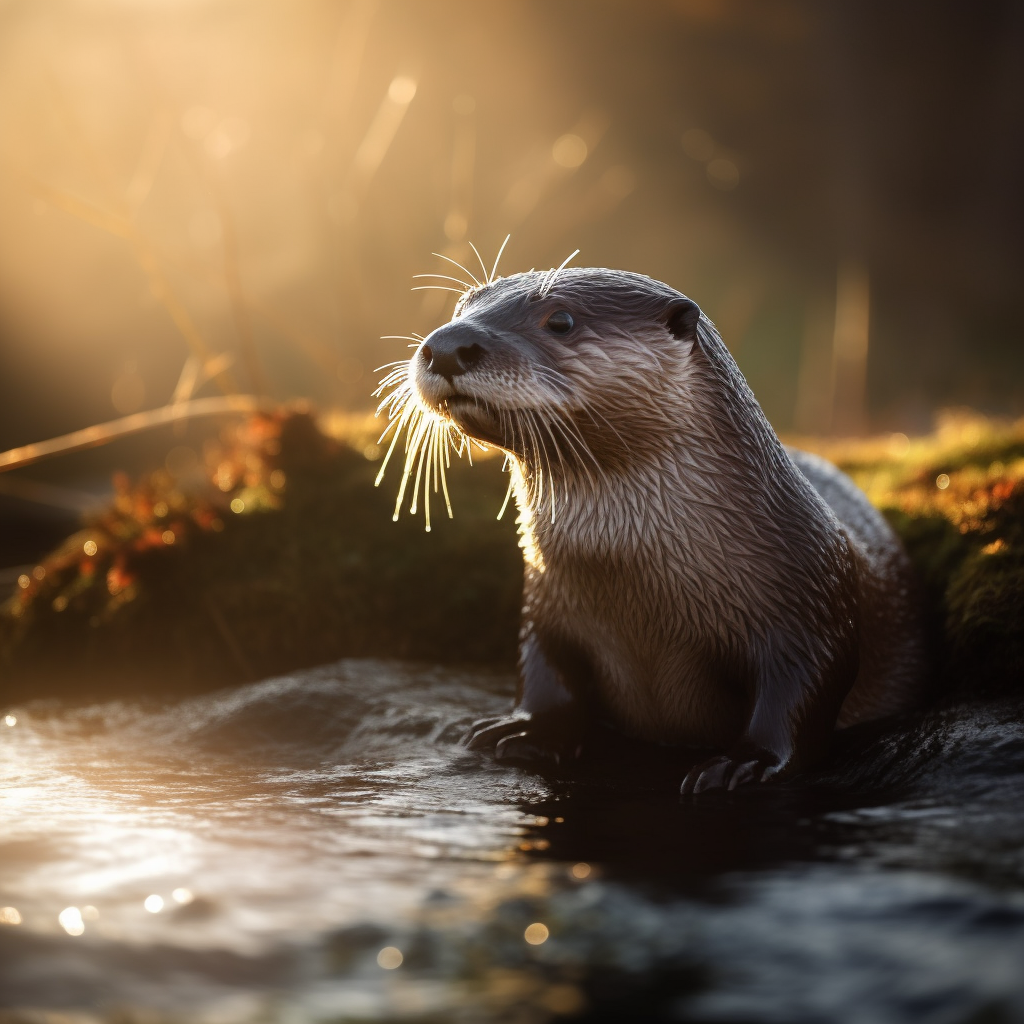River otters are fascinating creatures that inhabit rivers, lakes, and wetlands across North America. These playful and social animals are known for their sleek bodies, webbed feet, and ability to swim gracefully underwater. While their physical characteristics are impressive, one aspect of river otters that often goes unnoticed is their vocalizations. River otters communicate with a variety of noises, ranging from whistles and chirps to growls and snorts. These vocalizations serve different purposes, such as establishing territory, warning others of danger, and expressing emotions. In this article, we will explore the different types of river otter noises and delve into their significance in the otter’s social and ecological context. So, let’s dive in and discover the fascinating world of river otter vocalizations.
Key Takeaways
- River otters are highly vocal animals, using a variety of noises to communicate with each other.
- They produce a range of sounds, including chirps, whistles, growls, and screams.
- These noises serve different purposes, such as warning of danger, establishing territory, or attracting mates.
- River otter noises can be heard both above and below water, as they are skilled swimmers.
- Understanding the different vocalizations of river otters can provide valuable insights into their behavior and social dynamics.
Understanding River Otters: An Overview

River otters are fascinating creatures that inhabit various freshwater habitats across North America. These sleek and playful mammals are known for their excellent swimming abilities and their unique vocalizations. In this section, we will delve into the world of river otters and explore their behavior, habitat, and the sounds they make.
Behavior of River Otters
River otters are highly social animals that live in family groups called “rafts.” These rafts typically consist of a female otter, her offspring, and sometimes a male otter. Otters are primarily diurnal, meaning they are most active during the day. They are excellent swimmers and can dive underwater for several minutes in search of food.
These intelligent creatures have a wide range of behaviors that help them survive in their aquatic environment. They use their strong tails to propel themselves through the water, and their webbed feet allow them to navigate swiftly. River otters are skilled hunters and feed on a variety of aquatic prey, including fish, amphibians, and crustaceans.
Habitat of River Otters
River otters are found in a diverse range of habitats, including rivers, lakes, marshes, and coastal areas. They prefer areas with abundant vegetation and ample food sources. Otters build their dens in riverbanks, under fallen trees, or in abandoned burrows. These dens provide them with a safe place to rest, give birth, and raise their young.
River Otter Vocalizations
River otters are known for their wide range of vocalizations, which they use for communication. These vocalizations serve various purposes, such as establishing territory, expressing aggression, or signaling danger. While otters are generally quiet animals, they can produce a variety of sounds, including chirps, whistles, growls, and screams.
One of the most common vocalizations of river otters is a high-pitched squeak, which they use to communicate with each other. This sound is often heard during play or when otters are excited. Otters also engage in “chattering,” a rapid series of short, staccato sounds that are believed to be a form of social communication.
Communication Methods of River Otters
River otters use a combination of vocalizations, body language, and scent marking to communicate with each other. They have scent glands near their tails, which they use to mark their territory. By leaving their scent behind, otters can convey important messages to other otters in the area.
In addition to vocalizations and scent marking, river otters also communicate through body postures and movements. For example, when otters are feeling threatened or aggressive, they may arch their backs, raise their tails, and emit low growls. These visual cues help otters establish dominance and avoid conflicts.
Conclusion
Understanding the behavior and vocalizations of river otters provides valuable insights into their social dynamics and their adaptation to their aquatic habitat. By studying these fascinating creatures, researchers can gain a deeper understanding of their communication methods and contribute to their conservation. So, the next time you find yourself near a river or lake, keep an ear out for the distinctive sounds of river otters and appreciate the unique world they inhabit.
The Vocalization of River Otters: A Comprehensive Guide

River otters are fascinating creatures known for their playful behavior and sleek, streamlined bodies. But did you know that they also have a wide range of vocalizations? In this comprehensive guide, we will explore the various noises that river otters make and what they mean.
Communication Methods of River Otters
Like many animals, river otters use vocalizations as a means of communication. These sounds can convey a variety of messages, including warnings, greetings, and territorial claims. By understanding the different vocalizations of river otters, we can gain insight into their behavior and social dynamics.
Types of River Otter Vocalizations
River otters have a diverse repertoire of vocalizations, each serving a specific purpose. Here are some of the most common sounds you may hear from these aquatic mammals:
-
Chirps and Whistles: River otters often emit high-pitched chirps and whistles, which are typically used for communication within their social groups. These sounds can range from short, sharp calls to longer, more melodic whistles.
-
Growls and Grunts: When river otters feel threatened or agitated, they may emit low growls or grunts. These sounds serve as warning signals to potential intruders or rivals.
-
Screams and Cries: River otters can produce loud screams and cries, especially during times of distress or when separated from their group. These vocalizations are often used to attract attention and seek assistance.
-
Purring and Chattering: Similar to domestic cats, river otters can purr and chatter when they are content or excited. These soft, rhythmic sounds are typically heard during play or social interactions.
-
Hissing and Snorting: River otters may hiss or snort when they feel threatened or want to establish dominance. These sounds are often accompanied by aggressive body postures and are meant to intimidate potential adversaries.
Sound Patterns and Meanings
While individual river otter vocalizations can convey specific messages, it is the combination and sequence of sounds that truly reveal their intentions. By analyzing the patterns and context of these vocalizations, researchers have been able to decipher some of the meanings behind them.
For example, a series of high-pitched chirps followed by growls and hissing may indicate a territorial dispute between two otters. On the other hand, a chorus of purring and chattering during playtime signifies a harmonious and relaxed social interaction.
Conclusion
River otters are not only skilled swimmers and playful creatures but also possess a rich vocal repertoire. By understanding their various vocalizations and the meanings behind them, we can gain a deeper appreciation for these fascinating animals. So, the next time you encounter a river otter in the wild, listen closely to the sounds they make and marvel at the complexity of their communication.
Delving Deeper into River Otter Noises

River otters are fascinating creatures that inhabit freshwater ecosystems across North America. These playful and social animals have a wide range of vocalizations that they use to communicate with each other and navigate their environment. In this section, we will explore the various sounds of river otters and delve into their significance in otter behavior and communication.
The Language of River Otters
Like many other animals, river otters rely on vocalizations to convey important messages to their fellow otters. These vocalizations can range from high-pitched squeaks and chirps to low-frequency grunts and growls. By using different combinations of sounds, river otters are able to communicate a variety of messages, such as warnings, greetings, and mating calls.
Understanding Otter Vocalizations
To better understand the sounds of river otters, researchers have conducted studies on their vocalizations and behavior. Through these studies, scientists have identified several distinct otter calls and their corresponding meanings. Let’s take a closer look at some of these vocalizations:
-
Chirps and Whistles: River otters often emit chirping and whistling sounds to communicate with their group members. These high-pitched calls are used to maintain contact and coordinate activities, such as hunting or playing.
-
Growls and Grunts: When river otters feel threatened or agitated, they may produce growling or grunting sounds. These low-frequency vocalizations serve as warning signals to potential intruders or rivals.
-
Screams and Cries: River otters also have distress calls that they use when they are in danger or experiencing pain. These loud, piercing screams or cries can alert other otters to potential threats and prompt them to take action.
-
Purring and Chattering: River otters exhibit purring and chattering sounds when they are content and relaxed. These soft, rhythmic vocalizations are often heard during social interactions or when otters are grooming each other.
The Role of Otter Sounds in Behavior
The sounds of river otters play a crucial role in their behavior and social dynamics. By using specific vocalizations, otters can establish territories, attract mates, and maintain group cohesion. For example, during the mating season, male otters may emit distinctive calls to signal their availability and dominance to potential mates.
Furthermore, otter vocalizations also serve as a means of communication between otter parents and their offspring. Mother otters use unique calls to locate and reunite with their pups, ensuring their safety and well-being.
The Soundscape of River Otter Habitat
The diverse range of otter vocalizations contributes to the overall soundscape of their habitat. These sounds, combined with other animal noises and environmental factors, create a symphony of sounds that is unique to each river otter ecosystem.
Researchers and wildlife enthusiasts use acoustic monitoring techniques to study and document the sounds of river otters. By analyzing the patterns and frequencies of otter vocalizations, scientists can gain valuable insights into otter behavior, population dynamics, and habitat health.
Conclusion
River otters have a rich repertoire of vocalizations that they use to communicate and navigate their environment. From chirps and whistles to growls and grunts, these sounds play a vital role in otter behavior and social interactions. By studying and understanding the language of river otters, we can gain a deeper appreciation for these fascinating creatures and the ecosystems they call home.
The Giant River Otter: A Case Study
The giant river otter (Pteronura brasiliensis) is one of the most fascinating and charismatic creatures found in the rivers and wetlands of South America. With its sleek and muscular body, webbed feet, and playful nature, this species has captured the hearts of wildlife enthusiasts and researchers alike. In this case study, we will delve into the world of the giant river otter and explore its unique vocalizations and communication methods.
The Vocal Repertoire of the Giant River Otter
Like many other social mammals, giant river otters rely on vocalizations to communicate with each other. These vocalizations serve various purposes, including maintaining social bonds, coordinating group activities, and warning of potential dangers. The otters have a diverse range of sounds, each with its own meaning and context.
1. Contact Calls
Contact calls are the most commonly heard vocalizations of giant river otters. These calls serve as a way for individuals to keep track of each other’s whereabouts and maintain group cohesion. Contact calls are typically short and high-pitched, resembling a series of squeaks or chirps. By emitting these calls, otters can locate each other in their vast river habitats.
2. Alarm Calls
When giant river otters sense a potential threat, they emit alarm calls to alert other members of their group. These calls are characterized by a series of loud, repetitive barks or growls. The otters use alarm calls to warn their companions of the presence of predators or intruders, ensuring the safety of the group.
3. Aggressive Vocalizations
During territorial disputes or confrontations with other otters, giant river otters can produce aggressive vocalizations. These vocalizations include snarls, hisses, and low-frequency growls. By using these sounds, otters establish dominance and communicate their intent to defend their territory or resources.
The Importance of Otter Vocalizations
The vocalizations of giant river otters play a crucial role in their social structure and survival. By communicating through sounds, otters can coordinate their activities, locate each other, and warn of potential dangers. These vocalizations also help strengthen social bonds within the group, ensuring the cohesion and stability of their complex social structure.
Studying Otter Vocalizations
Researchers and wildlife enthusiasts have been captivated by the vocalizations of giant river otters. By studying these sounds, scientists can gain valuable insights into otter behavior, social dynamics, and habitat preferences. Advanced acoustic monitoring techniques, such as wildlife acoustics and sound pattern analysis, have allowed researchers to document and analyze otter vocalizations in their natural habitats.
Conclusion
The vocal repertoire of the giant river otter is a fascinating aspect of their behavior and communication. From contact calls to alarm calls and aggressive vocalizations, these sounds serve as a means for otters to navigate their complex social lives and ensure their survival in the wild. By studying and understanding these vocalizations, we can gain a deeper appreciation for the rich and diverse world of river otters. River Otter Noises at Night: A Fascinating Phenomenon
River otters are known for their playful nature and sleek appearance, but did you know that they also have a wide range of vocalizations? These noises play a crucial role in their communication and behavior, especially during the night. In this section, we will explore the intriguing world of river otter noises at night and delve into the reasons behind this fascinating phenomenon.
The Language of River Otters
Like many animals, river otters rely on vocalizations to communicate with each other. These sounds serve various purposes, including establishing territory, expressing emotions, and coordinating group activities. River otters have a diverse repertoire of noises, each with its own meaning and significance.
Nighttime Vocalizations
While river otters are active during both day and night, their vocalizations at night are particularly intriguing. During the dark hours, river otters tend to be more vocal, possibly due to reduced visibility and the need to communicate effectively in the darkness. These nighttime noises can be heard echoing through the waterways, creating an enchanting symphony of otter calls.
Types of River Otter Noises
River otters produce a wide array of sounds, each serving a specific purpose. Here are some of the most common vocalizations you might hear from these charismatic creatures:
-
Chirps and Chatters: River otters often emit high-pitched chirps and chatters, which are short, rapid series of sounds. These noises are typically associated with excitement or playfulness, indicating the otters‘ joyous mood.
-
Whistles and Trills: Whistles and trills are longer, melodic sounds that river otters use to communicate with each other. These noises can serve as contact calls, helping otters locate each other in the dark or dense vegetation.
-
Growls and Grunts: When river otters feel threatened or agitated, they may emit growls and grunts. These low-pitched, guttural sounds serve as warnings to potential intruders, signaling that the otters are ready to defend their territory.
-
Screams and Cries: River otters also have distress calls, which are loud, piercing screams or cries. These vocalizations are used when otters are in danger or experiencing pain, alerting nearby individuals to the situation.
The Importance of River Otter Noises
Understanding river otter vocalizations is crucial for researchers and conservationists studying these fascinating creatures. By deciphering the meaning behind each noise, scientists can gain insights into otter behavior, social dynamics, and habitat preferences. Additionally, monitoring otter vocalizations can help assess population health and track the success of conservation efforts.
Conclusion
River otter noises at night are a captivating aspect of these charismatic creatures‘ behavior. From chirps and chatters to screams and cries, each vocalization serves a specific purpose in otter communication. By unraveling the language of river otters, we can gain a deeper appreciation for their complex social lives and contribute to their conservation. So, the next time you find yourself near a river or wetland at night, listen closely for the enchanting sounds of river otters echoing through the darkness.
Otter Sounds Meaning: Interpreting the Language of Otters
River otters are known for their playful nature and their ability to adapt to both aquatic and terrestrial environments. These charismatic creatures have a complex communication system that involves a variety of sounds, each with its own meaning. By understanding these otter sounds, we can gain insights into their behavior, social interactions, and overall well-being.
Vocalizations: A Window into Otter Communication
Like many animals, river otters use vocalizations as a primary means of communication. These vocalizations can range from soft chirps and squeaks to loud, high-pitched calls. By listening closely to these sounds, researchers have been able to decipher the language of otters and gain a deeper understanding of their behavior.
Sounds of River Otters: What Do They Mean?
Otter calls serve different purposes and convey various messages within the otter community. Here are some common otter vocalizations and their meanings:
-
Chirps and Squeaks: Otters emit chirping and squeaking sounds to communicate with each other during playful interactions or to express excitement. These high-pitched noises are often heard when otters are engaged in social activities or during mating rituals.
-
Chattering: Otter chattering is a rapid series of short, staccato-like sounds. This vocalization is commonly heard when otters are hunting or exploring their surroundings. It is believed to serve as a way to coordinate their movements and communicate their location to other otters.
-
Distress Calls: When otters feel threatened or in danger, they emit distress calls to alert other members of their group. These calls are typically loud and piercing, serving as a warning signal to other otters to be on high alert.
-
Pup Noises: Otter pups have their own unique set of vocalizations. These sounds can range from soft whimpers to high-pitched cries, depending on their needs. Pup noises help otter parents locate and care for their young, ensuring their safety and well-being.
-
Social Sounds: Otters are highly social animals, and they use a variety of sounds to maintain social bonds within their group. These social sounds can include soft grunts, purring-like noises, and even snorts. They are often heard during grooming sessions or when otters are resting together.
Decoding Otter Sound Patterns
While individual otter sounds provide valuable information, it is the combination and context of these sounds that truly reveal the meaning behind otter communication. Researchers have identified specific sound patterns that indicate different behaviors and intentions. For example, a series of rapid chirps followed by chattering may indicate a successful hunting expedition, while a prolonged distress call could signal a potential threat in the environment.
Understanding these sound patterns allows researchers to study otter behavior in the wild and gain insights into their habitat preferences, hunting strategies, and social dynamics. It also helps conservationists monitor otter populations and assess their overall health and well-being.
The Fascinating World of Otter Communication
Listening to the sounds of river otters provides a glimpse into their intricate social lives and helps us appreciate the complexity of their communication system. By studying and interpreting these vocalizations, researchers can unlock the secrets of otter behavior and contribute to their conservation.
So, the next time you find yourself near a river or wetland habitat, take a moment to listen carefully. You might just hear the delightful sounds of otters communicating with each other, and gain a deeper appreciation for these fascinating creatures. Conclusion
In conclusion, river otters are fascinating creatures that communicate through a variety of vocalizations. From chirps and whistles to growls and screams, these noises serve different purposes such as social bonding, warning signals, and territorial defense. By understanding and appreciating the diverse range of river otter noises, we can gain a deeper insight into their behavior and ecology. So, the next time you’re near a river or wetland, keep your ears open for the enchanting sounds of these playful and vocal creatures.
Frequently Asked Questions
Where does the river otter start?
River otters are found throughout North America, Europe, and Asia in freshwater ecosystems that contain riparian zones. They are most commonly found in river systems, but they also inhabit marshes, coastal shorelines, and estuaries.
What noise does an otter make?
Otters are known to make a variety of sounds for different purposes. They can produce chirps, grunts, and growls. They also make a high-pitched whistle when they are in danger or distress.
What does an otter call sound like?
An otter call can vary depending on the situation. During mating season, males produce a unique whistle or chirp to attract females. When in distress or danger, otters emit a high-pitched squeal.
What is the meaning of otter sounds?
Otter sounds can convey different meanings. A chirp or whistle can be a mating call, a growl can be a warning to other otters or predators, and a high-pitched squeal can indicate distress or danger.
Where does an otter live?
Otters are found in a variety of aquatic habitats, including rivers, lakes, marshes, and coastal areas. They prefer habitats with plenty of vegetation and cover for protection.
Do river otters growl?
Yes, river otters do growl. This is often a warning sign to other otters or potential predators to stay away. It’s part of their communication methods.
What do river otters sound like?
River otters make a variety of sounds including chirps, grunts, growls, and high-pitched squeals. The specific sound can depend on the situation, such as mating, warning others, or expressing distress.
What are river otter calls?
River otter calls are the sounds they make to communicate with each other. These can include chirps, grunts, growls, and high-pitched squeals. Each sound has a specific meaning in otter communication.
Do river otters make noise?
Yes, river otters are quite vocal and use a variety of sounds to communicate with each other. These sounds can include chirps, grunts, growls, and high-pitched squeals.
What do river otter sounds at night mean?
River otters are more active at night, so their sounds can often be heard more clearly. These sounds can include mating calls, warning growls, or distress signals. The specific meaning of the sound depends on the situation and the individual otter‘s behavior.




